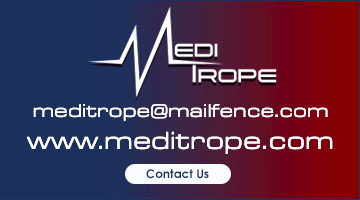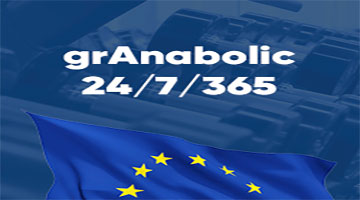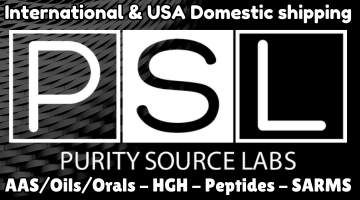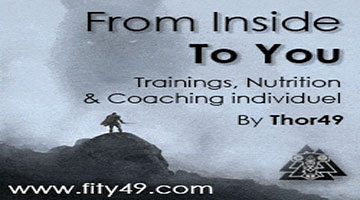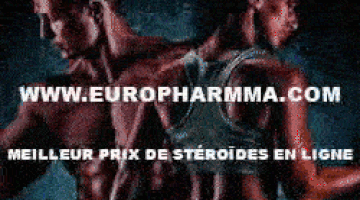Salut à tous,
Quelqu'un a entendu parler de ces nouvelles molécules ?
Voici un article:
Dimethyl-nandrolone is 136 times stronger than testosterone.
American researchers experimented with this new nandrolone analogue that seems to possess monstrous qualities. That became clear from their publication that was published in the Bioorganic & Medicinal Chemistry Letters. The new 19-nor-androgen appears if you add a methyl group on two spots at the nandrolone-molecule. On 7alfa and on 11beta. About the adding of methyl-groups on 11beta, the researchers write:
Introduction of an 11b-methyl substituent into steroid hormones has been reported to have significant effects on biological activity.
In rabbits, 11b-methyl-17a-ethynyl- 17b-hydroxyestr-4-en-3-one has 25-fold the progestational activity of norethindrone (its 11-nor homolog). The 11b-methyl compound also has some estrogenicity (ca. 16% of estrone in rats).
11b-Methylestradiol has 124% the relative binding affinity of estradiol for the rat estrogen receptor and is equivalent to estradiol in uterotropic activity.
Baran et al. also report in a patent that 11b-methyl-19-nortestosterone has androgenic activity, although data are not given.
The designers of the new androgen started with 11beta-methylnandrolon. See the attached graphical structure. The arrow at the yellow circle in the steroid molecule is the new methyl group. If you also add a methylgroep on 7alfa, this is on the same spot where the group is also added on MENT, then you get your 7alfa,11beta-methylnandrolon. The researchers found that name however too simple, because each idiot now could understand about which molecule the “genius scientist ‘ where talking. Therefore the scientist handled the term RTI-1176-012. That makes more impression. Now that term is way too complicated to handle, and nobody can remember that. Therefore the scientist abbreviated it to -012.
We have examined the effect on androgen receptor binding and activity resulting from introduction of both 7a- and 11b-methyl groups into 19-nortestosterone, and found that the combination results in enhancement of activity together with increased separation of effects on muscle and ventral prostate.
Receptor binding affinity was determined by use of the androgen receptor from cytosol of the ventral prostate of castrated male rats.
For estrogen binding, the estrogen receptor from the uterus of 15-day-old rats was used
The outcomes were, ehm, striking. Are you ready for it?
RTI- 1176-012 had a relative binding affinity for the androgen receptor of 194 ± 24 (SE, n = 4) relative to DHT = 100, compared with 162 ± 35 (n = 3) for MENT and only 22 for the 7b,11b-dimethyl analog RTI-1176-013. Estrogen receptor binding for RTI-1176-012 was very low (0.6 ± 0.56, n = 3).
The new steroid is twice as androgenic as a DHT, appeared from the tests in the test-tube. But it gets even more beautiful when the scientists wrote about their tests with rats.
Compound RTI-1176-012 (-012) (10, 40, and 160 mug total dose, given subcutaneously in 10% ethanol in sesame oil) was compared directly with testosterone (100, 400 and 1600 mug) and 11b-methyl-19-nortestosterone (10, 40, and 160 mug) in immature (22 days) castrated male rats injected daily for 7 days for effects on the ventral prostate (VP) and seminal vesicles (SV).
Anabolic activity of -012 was also assessed. Over the dose range of 0.25–1 mg total dose in a 10 day Hershberger assay -012 showed 136-fold the activity of testosterone on levator ani (LA, muscle) weight, 37-fold activity for SV and 14-fold activity for VP.
Over a similar dose range, MENT had values of 25-fold, 8-fold and 6-fold for the three tissues
In the figure below you see the relation between the quantity of dimethyl-nandrolone and the enlargement of the prostate.
If you look to the androgenic-anabolic ratio the new means is surprisingly mild, the researchers write down. By the below passage you must well consider that the American scientists have applications in low doses in mind. It never crossed their minds that this means could perhaps fall in the hands of an other target group, that will use other quantities and thinks different about side effects.
Because of the ability of receptors to modify their conformation in response to ligands, combining two substituents that reportedly contribute to a specific biological activity may or may not enhance the response.
Thus it was gratifying that our expectation of enhanced activity upon combining 7a-methyl and 11b-methyl substituents in 19-nortestosterone led to a potent and selective compound.
In our tests, this modification resulted in at least a 5-fold increase in androgenic potency over the compound with only the 11a-methyl group when measured by the effect on VP.
The 2-fold difference observed over the 7a-methyl compound for this same endpoint was less striking, but still indicated at least equal if not increased potency.
More importantly, the increase in anabolic potency for the 7a,11b-dimethyl modification appears to be markedly greater, and the LA:VP ratio is 5-fold more than that of the selective 7a-methyl analog at similar doses, indicating a more selective anabolic:androgenic ratio for –012.
Cook CE, Kepler JA. 7a,11b-Dimethyl-19-nortestosterone: a potent and selective androgen response modulator with prostate-sparing properties. Bioorg Med Chem Lett. 2005 Feb 15;15(4):1213-6.
Quelqu'un a entendu parler de ces nouvelles molécules ?
Voici un article:
Dimethyl-nandrolone is 136 times stronger than testosterone.
American researchers experimented with this new nandrolone analogue that seems to possess monstrous qualities. That became clear from their publication that was published in the Bioorganic & Medicinal Chemistry Letters. The new 19-nor-androgen appears if you add a methyl group on two spots at the nandrolone-molecule. On 7alfa and on 11beta. About the adding of methyl-groups on 11beta, the researchers write:
Introduction of an 11b-methyl substituent into steroid hormones has been reported to have significant effects on biological activity.
In rabbits, 11b-methyl-17a-ethynyl- 17b-hydroxyestr-4-en-3-one has 25-fold the progestational activity of norethindrone (its 11-nor homolog). The 11b-methyl compound also has some estrogenicity (ca. 16% of estrone in rats).
11b-Methylestradiol has 124% the relative binding affinity of estradiol for the rat estrogen receptor and is equivalent to estradiol in uterotropic activity.
Baran et al. also report in a patent that 11b-methyl-19-nortestosterone has androgenic activity, although data are not given.
The designers of the new androgen started with 11beta-methylnandrolon. See the attached graphical structure. The arrow at the yellow circle in the steroid molecule is the new methyl group. If you also add a methylgroep on 7alfa, this is on the same spot where the group is also added on MENT, then you get your 7alfa,11beta-methylnandrolon. The researchers found that name however too simple, because each idiot now could understand about which molecule the “genius scientist ‘ where talking. Therefore the scientist handled the term RTI-1176-012. That makes more impression. Now that term is way too complicated to handle, and nobody can remember that. Therefore the scientist abbreviated it to -012.
We have examined the effect on androgen receptor binding and activity resulting from introduction of both 7a- and 11b-methyl groups into 19-nortestosterone, and found that the combination results in enhancement of activity together with increased separation of effects on muscle and ventral prostate.
Receptor binding affinity was determined by use of the androgen receptor from cytosol of the ventral prostate of castrated male rats.
For estrogen binding, the estrogen receptor from the uterus of 15-day-old rats was used
The outcomes were, ehm, striking. Are you ready for it?
RTI- 1176-012 had a relative binding affinity for the androgen receptor of 194 ± 24 (SE, n = 4) relative to DHT = 100, compared with 162 ± 35 (n = 3) for MENT and only 22 for the 7b,11b-dimethyl analog RTI-1176-013. Estrogen receptor binding for RTI-1176-012 was very low (0.6 ± 0.56, n = 3).
The new steroid is twice as androgenic as a DHT, appeared from the tests in the test-tube. But it gets even more beautiful when the scientists wrote about their tests with rats.
Compound RTI-1176-012 (-012) (10, 40, and 160 mug total dose, given subcutaneously in 10% ethanol in sesame oil) was compared directly with testosterone (100, 400 and 1600 mug) and 11b-methyl-19-nortestosterone (10, 40, and 160 mug) in immature (22 days) castrated male rats injected daily for 7 days for effects on the ventral prostate (VP) and seminal vesicles (SV).
Anabolic activity of -012 was also assessed. Over the dose range of 0.25–1 mg total dose in a 10 day Hershberger assay -012 showed 136-fold the activity of testosterone on levator ani (LA, muscle) weight, 37-fold activity for SV and 14-fold activity for VP.
Over a similar dose range, MENT had values of 25-fold, 8-fold and 6-fold for the three tissues
In the figure below you see the relation between the quantity of dimethyl-nandrolone and the enlargement of the prostate.
If you look to the androgenic-anabolic ratio the new means is surprisingly mild, the researchers write down. By the below passage you must well consider that the American scientists have applications in low doses in mind. It never crossed their minds that this means could perhaps fall in the hands of an other target group, that will use other quantities and thinks different about side effects.
Because of the ability of receptors to modify their conformation in response to ligands, combining two substituents that reportedly contribute to a specific biological activity may or may not enhance the response.
Thus it was gratifying that our expectation of enhanced activity upon combining 7a-methyl and 11b-methyl substituents in 19-nortestosterone led to a potent and selective compound.
In our tests, this modification resulted in at least a 5-fold increase in androgenic potency over the compound with only the 11a-methyl group when measured by the effect on VP.
The 2-fold difference observed over the 7a-methyl compound for this same endpoint was less striking, but still indicated at least equal if not increased potency.
More importantly, the increase in anabolic potency for the 7a,11b-dimethyl modification appears to be markedly greater, and the LA:VP ratio is 5-fold more than that of the selective 7a-methyl analog at similar doses, indicating a more selective anabolic:androgenic ratio for –012.
Cook CE, Kepler JA. 7a,11b-Dimethyl-19-nortestosterone: a potent and selective androgen response modulator with prostate-sparing properties. Bioorg Med Chem Lett. 2005 Feb 15;15(4):1213-6.





